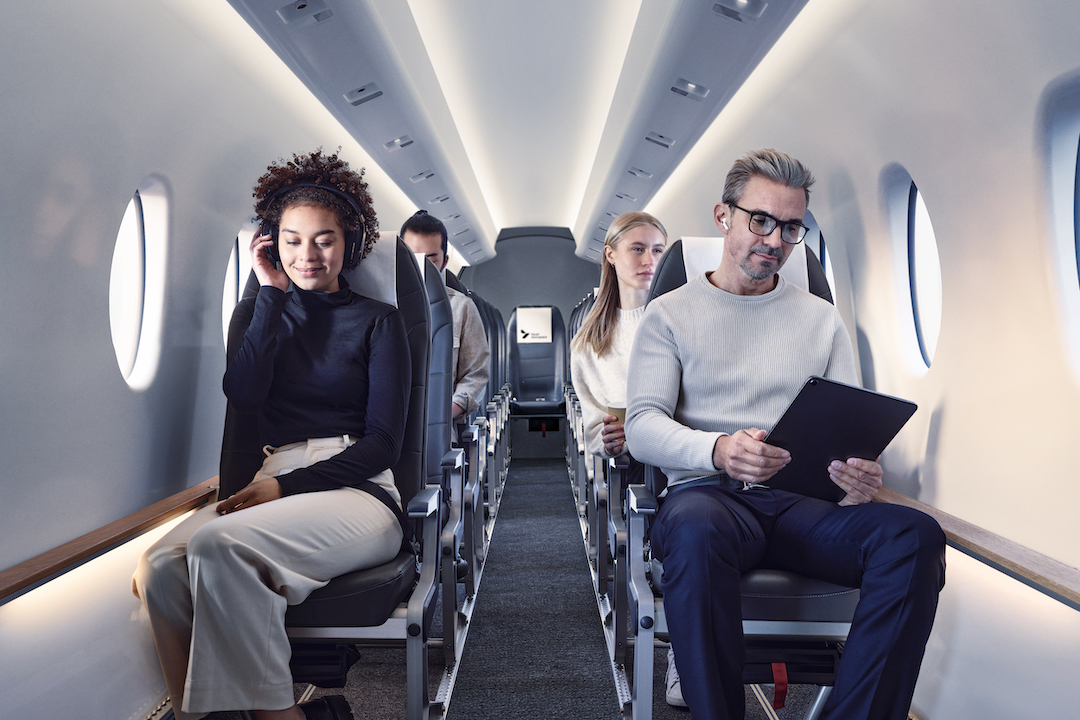
Ever since the 1990s, flying from point A to point B has often required transferring in point C, and, not infrequently, point D as well. This is largely due to economics: flying directly between two destinations may make good sense for travellers, but, for airlines, the most profitable way to do things is to move as many people as possible in as few aircraft as possible. In the North, this means sending people from small airports to hubs outside of the region, and then sending them back again. The idea behind doing things this way is that it allows airlines to fly larger aeroplanes and, at least potentially, to sell more tickets between points A and B.
The disappearance of the short-haul, low-demand routes has been the consequence of a process known as deregulation that was begun in America in 1978 and grabbed onto in Europe (where it was known as liberalisation) in the 1990s. The goal was more competition, and thus lower prices. As it turns out, short-haul routes may be crucial for the success of the next big thing in the air-travel industry. Electric passenger planes are still years away from proving they can offer a viable alternative to traditional planes and jets — few models are even flying yet — but the first that do will have a size and range that is ideally suited to short routes.
To date, much of the focus when discussing electric aeroplanes has been on the aeroplanes themselves, or, more specifically, their engines (one of which is pictured above) and the batteries that power them. This makes sense: if batteries do not have the juice they need to get an aeroplane and its passengers safely to their destination, the idea is a non-starter. The industry, however, insists that the technology is there (or will be very soon) and that the focus should now be on finding the routes that can turn it into a viable business case.
“The hard thing is not coming up with the ideas. The hard thing is to get them into service,” Anders Forslund, the head of Heart Aerospace, told the audience of last year’s Arctic Circle, a big regional gathering. He has reason to be optimistic; although his firm has yet to produce a full-size model of its ES-19, a 19-seat propeller-driven battery-powered aeroplane, it is being considered for purchase by Finnair and Icelandair for use on their shortest routes.
The hope is that the ES-19, if it ever gets off the ground, will be a viable alternative to traditional planes and jets on domestic routes in these countries, as well as in places like Greenland, where low-demand flights, many of them just a few hundred kilometres, dominate. Once fully developed, small electric planes of the sort Heart Aerospace is developing will cost the same as comparable aeroplanes cost today, Mr Forslund reckons.
One of the first places that electric planes will get the chance to show their worth will probably be Northern Scandinavia. Finland, according to YLE, a broadcaster, is preparing to begin test flights in Lapland next autumn, flying both on domestic routes, and to destinations in Sweden and Norway. To begin with, traditional planes powered by aviation fuel that, instead of petroleum, is produced from waste and residues such as used cooking oil or animal fat, will fly the routes.
The aim is first and foremost to make sure that there is indeed demand for regional routes, and, if there is, to get started setting up the infrastructure electric aeroplanes would need, and training the ground crew and technicians that would be needed to service them. Heart Aerospace expects the ES-19 will be certified for flight in 2026, and, in infrastructure-investment terms, that is not a lot of time time to prepare.
Nor it is a lot of time for airlines to make decisions about whether to incorporate electric aeroplanes into their fleets now, or wait until the technology is more mature. Icelandair, according to Jens Þórðarson, the chief operating officer, is looking to make a decision in the coming years about finding a replacement for its current fleet of domestic aircraft, and he expects that the planes the airline buys will still be in service in 2050. It is sees electric aeroplanes as ideally suited for its domestic routes, but, if it is not convinced it can safely convert to electric all at once, it will have to stick to traditional aeroplanes and phase in electric versions gradually.

Those familiar with the industry note that the limited range of electric airplanes would rule them out on flights to destinations where there is no alternative landing site within close proximity. But, aside from that, using electric planes to serve low-density routes, they say, is generally feasible and makes economic sense.
Part of the reason for this is, as with electric cars, one of the advantages of electric airplane motors is that they are cheaper to operate and maintain than turboprop or jet engines. Charging infrastructure on the ground would be able to take its cue from battery-charging technology developed for the auto industry, further reducing the costs of conversion to electric.
Likewise, some of the aircraft currently in development are largely based on existing aeroplane technology. This allows firms to focus their work on improving electric motors so they can get them to market faster, and on improving their performance, so they can be used for larger aeroplanes. The current generation of batteries will set a limit on how far they can progress, however. So even if electric aeroplanes do make it possible to fly directly from point A to point B, getting to point C may require downgrading to yesterday’s technology.
Kevin McGwin, PolarJournal
(Featured image: Heart Aerospace)
More about this topic





